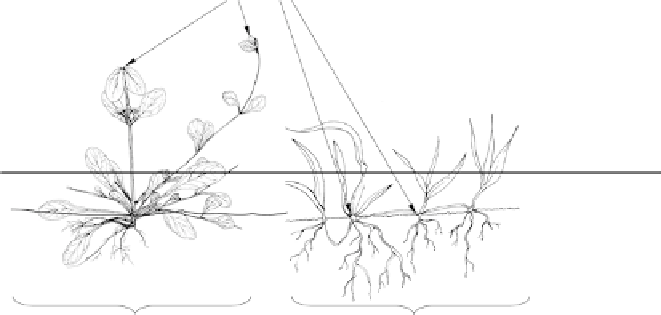Environmental Engineering Reference
In-Depth Information
A change in ground speed changes the distribution pattern; granules are
thrown farther at high speeds and less far at lower speeds. Heavy gran-
ules do not travel as far as light granules, and drift may be a problem
with fine particles when wind is present.
Weeds
Weeds are plants that grow where they are not wanted. In turf-grass
situations, a plant is usually considered a weed when its size, shape,
growing habit or colour disrupt the uniformity of the turf area. Even
normally desirable plants such as cynodon, which form attractive and
highly desirable turf when grown alone, may be considered weeds if they
grow in a turf of some dissimilar species, like St Augustine grass. The
plant species considered weeds in turf are not generally the same ones
considered weeds in agronomic crops. For example, broad-leaf weeds
(dicotyledons) are a serious problem in agronomic crops but in turf pose
relatively minor problems. Their growing points (apical meristems) are at
the top of the stem and can be removed at each mowing. Therefore, most
broad-leaf species can easily be mowed out, and only a few, those that
have adapted to continuous defoliation, present a challenge if chemical
control is not used (Fig. 11.6). On the other hand, 'grassy' species (grasses
and grasslike plants, monocotyledons) can cause profound problems in
Growing point
Mowing height
Dicotyledons
Monocotyledons
Fig. 11.6. Mowing cuts off stems and growing points of dicotyledons, and
continually regenerating them depletes food reserves, whereas monocotyledons lose
only leaf area and are little affected.


